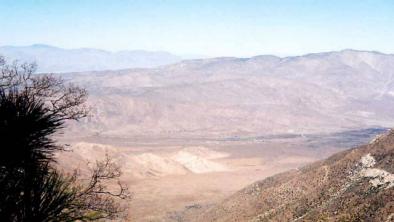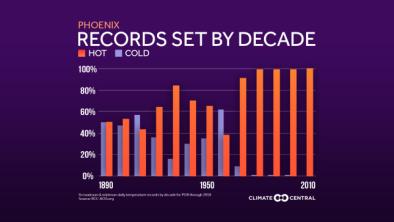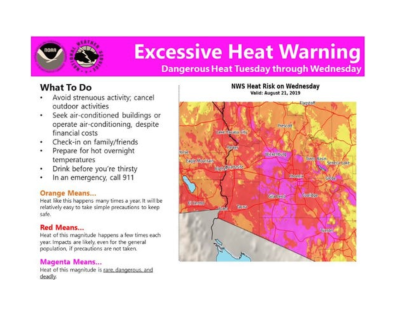Western US Extreme Heat August 2019
The western US experienced record-challenging temperatures during the last half of August as the region endures one of the driest monsoon seasons on record. On August 21, at least four record highs were broken in the Southwest, three of which were in Arizona.[1]
Virtually all record-breaking temperatures are getting a boost from global warming. There is also evidence suggesting that global warming is linked to changes in large scale circulation that cause weather patterns to get stuck, leading to more extremes.


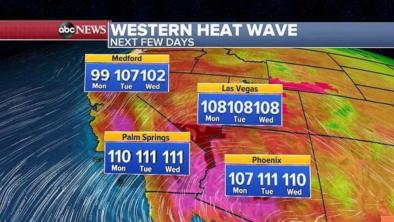
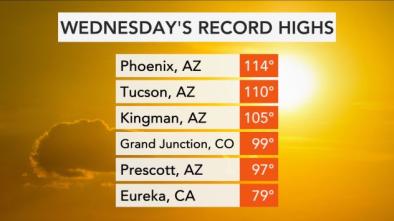
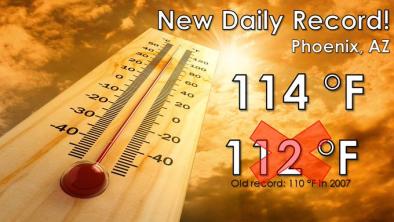
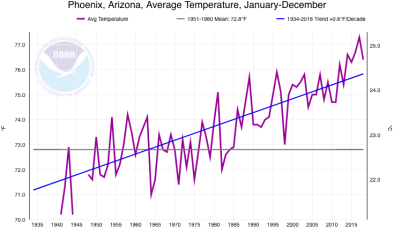
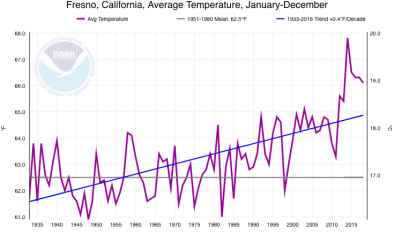
Climate science at a glance
- Extreme heat is among the most obvious and well documented effects of climate change.
- The signal of climate change is especially clear in the western United States where a formal attribution study has made the link.[1]
- In the US, western regions set the most records for the number of heat wave events in the 2000s.[2]
- Four out of five record-hot days globally are now amplified by the trend in global warming.[1]
Background: high pressure systems
High-pressure systems, such as the one stationed along the US west coast during this heat wave, occur when air from upper levels of the atmosphere sinks toward the ground. When the air sinks, it becomes compressed because there is more weight on top and the temperature of the air mass increases. Heat waves occur when a system of high atmospheric pressure moves into an area and lasts for an extended period of time.
Climate Signals breakdown
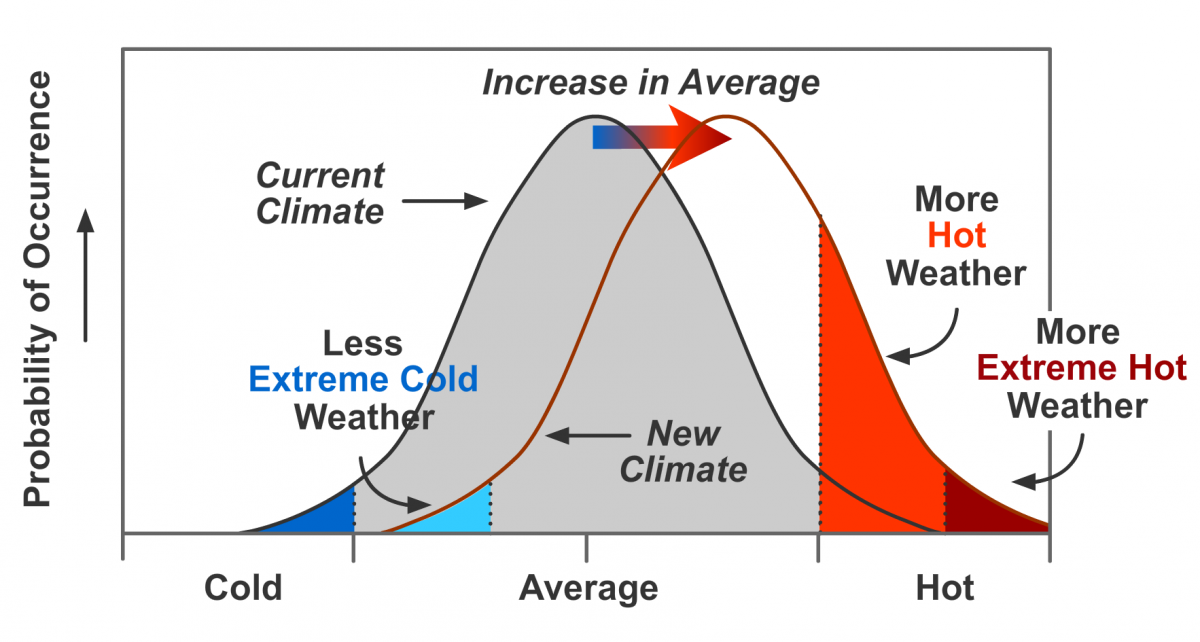 Climate Signal #1: Extreme heat and heat waves
Climate Signal #1: Extreme heat and heat waves
Record breaking temperatures are a classic signal of climate change. As the average global temperature rises and the climate shifts, hot temperatures that were extreme under the old climate are closer to the middle of the new temperature range.[3]
Under the earth's climate system, events closer to the midpoint of the climate range occur much more frequently than events closer to the extremes, as shown in the graphic on the right. The shifting bell curve also leads to the occurrence of never-before-seen extremes in high temperatures.[4]
There has been a dramatic increase in hot nighttime temperatures in the US, reducing the number of critically important relief windows during heat waves.[5] The increase in hot nighttime temperatures in particular is one of the signatures of climate change.[6] Scientists have identified the fingerprint of human-caused climate change in the strong increase in the number of warm nights in western North America.[7]
Observations consistent with climate signal #1
- On August 21, at least four record highs were broken in the Southwest, three of which were in Arizona.[8]
Climate Signal #2: Humidity and Heat Stress Increase
Exposure to extreme heat is already a significant public health problem and the primary cause of weather-related mortality in the US.[9] As temperatures continue to increase due to climate change, heat stress is expected to worsen. The atmosphere can also hold more water, reducing our bodies’ ability to cool off and increasing our risk of heat-related illness. The Heat Index is a measure of how hot it really feels when relative humidity is factored in with the actual air temperature.
Observations consistent with climate signal #2
- As of mid-August, 32 children under age 15 have died of heatstroke in 2019, well on the way to surpassing the annual average of 38 and just short of the pace that would match the 53 from 2018, the worst year on record.
Climate Signal #3: Atmospheric blocking increase
The fingerprint of anthropogenic climate change has been identified in the temperature pattern favoring planetary wave stalling.[11] Planetary waves are a pattern of winds, of which the jet stream is a part, that encircle the northern hemisphere in lines that move from the tropics to the poles. Normally, the whole wave moves eastwards but, under certain temperature conditions, the wave can halt its movement. This leaves whole regions under the same weather for extended periods, which can turn hot spells into heatwaves and wet weather into floods.[11]
Studies have shown that the strength of these persistent weather patterns has trended upward in recent decades. One analysis identifies an increase in the intensity of persistent high pressure areas over the entire Northern Hemisphere during the summer months from 1979 to 2010.[4]
Observations consistent with climate signal #3
Related Content
